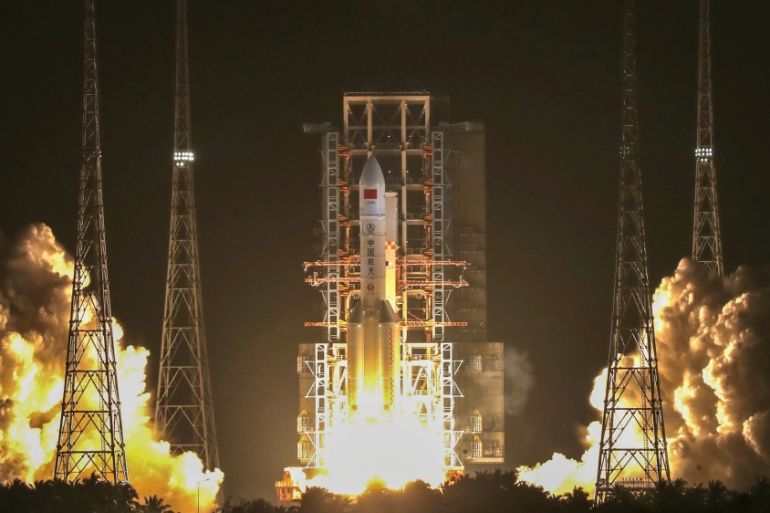China’s Long March 5 rocket can fly
The decade’s final rocket launch puts China’s moon and Mars missions back on track.

Citizens of the most populous nation on earth and their compatriots inside the Wenchang Space Launch Site control room held their breath as China‘s largest and most powerful rocket, the Long March-5 Yaosan, blasted off Friday from the southern island of Hainan at 8:45pm CST (12:45 GMT) in what has been widely regarded as a critical test of the nation’s spacefaring abilities.
“The rocket is vital to China’s future space missions. It will be tasked with launching China’s first Mars probe and sending the Chang’ e-5 lunar probe to the moon to bring lunar samples back to Earth,” according to the Chinese Communist Party’s international television network CGTV.
Keep reading
list of 4 itemsBoeing postpones launch of Starliner space capsule after technical fault
China launches Chang’e-6 probe to study dark side of the moon
China launches historic mission to far side of the moon
“In addition, a modified version of the rocket, Long March-5B, will be used to construct China’s space station,” CGTV reported.
Friday evening’s launch was as much about achieving closure on the Long March-5’s past failure as it was about looking forward to undertaking 2020’s challenging missions and to competing for pre-eminence in space.
The launch was also the decade’s last and China’s 34th for 2019, a number higher than any other nation for the second year running. Nevertheless, two of those launches failed, causing some to wonder whether tonight’s lift-off would be a repeat of summer 2017.
Back in July 2017, shortly after the Long March-5 blasted off, the first stage rocket engines failed, sending the launch system and its payload, the communications satellite Shijian-18, splashing into the ocean.
The failure was a blow to the Chinese space agency’s plan to place its space station’s initial core module, the astronaut living quarters, into orbit in 2018. The event was an even more bitter disappointment as the week prior, a Long March-3B rocket’s upper-stage burn did not achieve the necessary thrust to get its payload into geostationary orbit.
“Over the past two years, the research team has solved the problem of the engine and improved the reliability of the rocket,” said Wang Jue, chief commander of the research team, as reported by Xin Hua.
Now that the China National Space Administration (CNSA) has proven that its Long March-5, nicknamed the “Fat Five” can fly, it is expected to proceed at pace to challenge the United States for the title of being the most advanced spacefaring nation.
In 2020, China claims it will launch a variety of missions, including a rover to Mars, return a sample from the moon and put a space station module into orbit. If China successfully places a space station into orbit, it will be only the third nation to do so, after the former Soviet Union and the United States.
China has been developing its space programme with speed. In January 2019, the nation’s second lunar lander, the Chang’ e-4, not only reached the South Pole, it was also the first time any country had touched down on the far side of the moon. Later in June, China launched seven satellites into space from a “sea pad,” a feat only Russia and the United States have achieved.